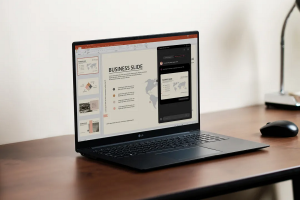HVD: Cloud Desktops Come Of Age
![]() It’s almost funny. Virtual desktop infrastructure, or VDI, was supposed to be a panacea for what ails the modern IT department. Properly built, configured and deployed, VDI can boost agility, save energy, and enable a mobile workforce to do business with their existing devices. But that’s easier said than done, and many organizations find themselves buckling under the strain. But another option is emerging: hosted virtual desktops, or HVD, and the market is catching up to VDI.
It’s almost funny. Virtual desktop infrastructure, or VDI, was supposed to be a panacea for what ails the modern IT department. Properly built, configured and deployed, VDI can boost agility, save energy, and enable a mobile workforce to do business with their existing devices. But that’s easier said than done, and many organizations find themselves buckling under the strain. But another option is emerging: hosted virtual desktops, or HVD, and the market is catching up to VDI.
HVD is more or less what it says on the tin. Much like VDI delivers a virtual desktop from a data center, HVD enables the delivery of a Windows environment, complete with business and productivity applications, but from a cloud service provider. The advantage is simple and profound – for a flat monthly subscription rate, HVD providers add those key mobility and agility benefits, without the need for complex, impossible-to-manage infrastructure.
It’s not a new idea, but in the past, HVD was held back by bandwidth restrictions and worries over loss of control. But the rise of BYOD, increasingly ubiquitous and speedy broadband in homes and small businesses alike, and the desire to save on power usage with thin clients are all contributing factors for even small businesses to look into moving their compute power out of the cloud.
That all brings us around to Dell’s acquisition of Wyse, announced yesterday. Wyse is first and foremost a VDI solution provider, but Dell still heavily promoted the purchase as one that would bolster its cloud services business. And why? Dell knows that while it can invest in the VDI market, there’s going to be a serious demand for HVD going forward.
Further evidence lies in the fact that when cloud gaming provider OnLive expanded its market with an application that brings full business desktops to Google Android and Apple iPad tablets back in March, it went on to dominate the charts.
On the flip side, HVD provider dinCloud recently reached out to those enterprises who weren’t willing to move to a solution in the public cloud with a complete turnkey hardware/software VDI solution based on its proprietary cloud-born technology, designed to make it simple for a customer to deploy hosted desktops from their own facilities with no additional infrastructure configuration or investment needed.
Services Angle
Dell’s Wyse buy – and the spin that the tech titan is putting on it – goes a long way towards validating the maturity of cloud HVD as a low-touch, high-value alternative to more traditional approaches to desktop virtualization (Though Dell still plays in that market). And as Dell continues to promote itself as a service provider and a major cloud player both, leveraging Wyse’s portfolio to add HVD to its catalogue will probably pay off in the long run.
But it’s not a perfect solution. As with so many attempts to bring legacy software into the cloud, there are questions of licensing. In fact, the HVD market recently experienced some drama when Guise Bule, CEO of cloud desktop provider tuCloud threatened to take Microsoft on directly over what it sees as unfair Windows virtualization license practices that privilege some of its vendor partners over others.
A message from John Furrier, co-founder of SiliconANGLE:
Your vote of support is important to us and it helps us keep the content FREE.
One click below supports our mission to provide free, deep, and relevant content.
Join our community on YouTube
Join the community that includes more than 15,000 #CubeAlumni experts, including Amazon.com CEO Andy Jassy, Dell Technologies founder and CEO Michael Dell, Intel CEO Pat Gelsinger, and many more luminaries and experts.
THANK YOU













